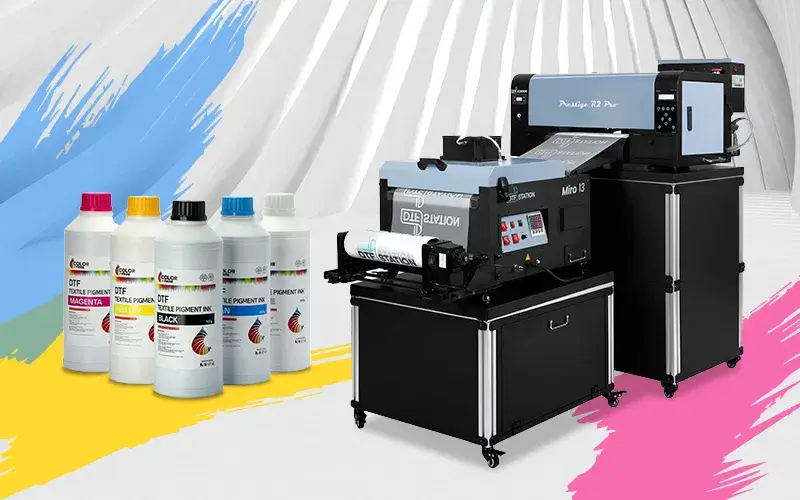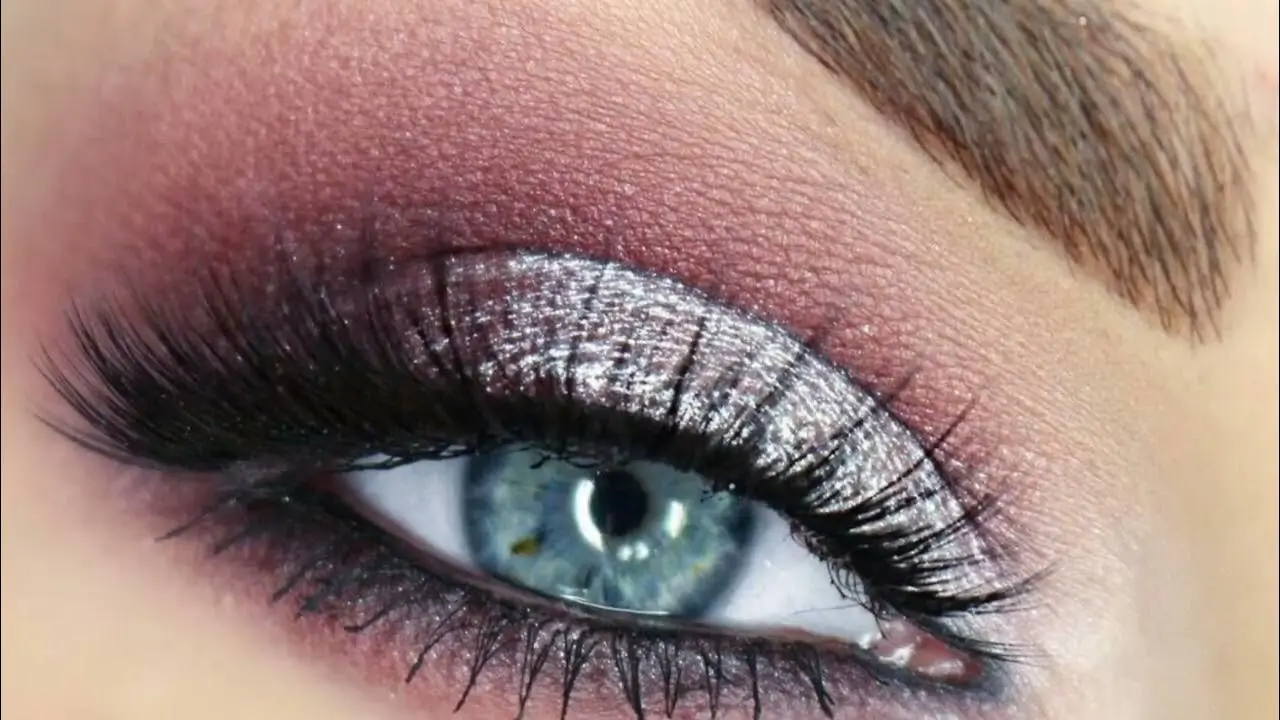In the field of textile Printing, DTF (Direct to Film Printing) and DTG (Direct to Garment Printing, digital direct printing, also known as textile direct injection) are two important printing technologies. The inks used in these two technologies – DTF textile printing ink and DTG pigment ink – differ significantly in terms of composition, application, effect and cost. This article will discuss the differences between these two inks in detail to help readers better understand the characteristics and application scenarios of these two printing technologies.
1. Technical principles
DTF technology is a method of first printing ink on the release transfer paper or DTF PET film, and then closely combining it with hot melt adhesive powder, and finally using a hot press to transfer the pattern to the fabric. After the DTF ink forms a pattern on the transfer paper or film, it is heated to melt the hot melt adhesive powder, thereby transferring the pattern to the fabric surface. This technology has the characteristics of simple operation and wide application range, and can be applied to different types of fabrics and articles.
DTG is a printing method in which ink is sprayed directly onto the fabric. With a high-precision nozzle, DTG printers spray pigment inks directly into fabric fibers to form patterns. DTG inks are mostly water-based and use advanced formulations to ensure precise, rich color levels with each injection. This technology does not require plate making, that is, printing, which greatly shortens the delivery cycle and reduces the initial investment cost.
2. Ink composition and characteristics
DTF textile printing inks have different characteristics. DTF ink requires the help of hot melt adhesive powder in the transfer process, so its composition contains special ingredients that can interact with hot melt adhesive powder. After the DTF ink is transferred to the fabric, it forms a film, which has a certain elasticity and flexibility, making the pattern not easy to crack or flake during the washing process. DTF ink also has a wide range of applicability, can be applied to cotton, nylon, treated leather, polyester and other fabrics, and even can be applied to luggage, shoes and other non-textile items.
DTG pigment inks are water-based or plant-based, non-toxic, low volatility, and have little impact on the environment. The ink is specially treated to penetrate deep into the fibers, ensuring that the pattern is washable and wear-resistant. DTG ink is bright in color and high in saturation, and can accurately present rich and delicate color layers to meet the most demanding visual needs. However, DTG printing has limitations and is suitable for pure cotton fabrics. If other fabrics need to be printed directly, they need to go through more troublesome processing.
3. Application effects and advantages
DTF technology has advantages in terms of application range and flexibility. DTF ink can be applied to a wide range of fabrics and items, regardless of the material and shape of the fabric. This makes DTF technology have a wide application prospect in personalized customization and decorative printing. For example, DTF technology can be used to make personalized clothing such as T-shirts and hoodies, as well as customized gifts such as throw pillows and canvas bags. In addition, DTF technology can also be applied to decorative items such as decorative pendants and indoor decorations to add unique visual effects to these items.
DTG technology has significant advantages in printing. Because the DTG ink is sprayed directly into the fabric fibers, a tight bond is formed between the pattern and the fabric, making the pattern have excellent firmness and durability. Even after frequent wear and washing, the pattern can remain bright. In addition, wearing DTG printed clothing will be more comfortable and breathable. In addition, DTG technology also supports high-resolution printing, like photo-grade print quality, details are clearly visible, improving the grade and quality of the product.
4. Operating cost and efficiency
DTF technology has advantages in terms of ease of operation and efficiency. DTF technology adopts transfer mode, the operation process is relatively simple, without complex plate making process. At the same time, the operation time of DTF technology is short, and a large number of printing tasks can be completed in a short time. This gives DTF technology an advantage in mass production and rapid response to market demands.
In terms of operation cost and efficiency, DTG technology and DTF technology have advantages and disadvantages. DTG technology does not require plate making, that is, printing, greatly shortening the delivery cycle and reducing the initial investment cost. At the same time, DTG printers and ink systems are easy to maintain and relatively low operating costs. This gives DTG technology significant advantages in terms of small batch production and personalized customization.
However, it is important to note that the cost of DTF technology is relatively high. Because DTF ink needs to be transferred by hot melt adhesive powder, its cost includes ink cost, transfer paper cost and hot melt adhesive powder cost. In addition, DTF technology also requires professional transfer equipment and operation technology, which also increases its cost input.
5. Application scenarios and market demand
DTF technology is suitable for a variety of fabrics and items printing needs. Because DTF technology has a wide range of applicability and flexibility, it can be used to make a variety of personalized clothing, gift customization and decorative items. In addition, DTF technology can also be applied to non-textile items, such as luggage, shoes, etc., to add a unique visual effect to these items. This makes DTF technology more widely applicable in terms of market needs.
DTG technology and DTF technology have their own unique application scenarios and market demands. DTG technology is suitable for personalized customization and high-end textile printing needs. Because DTG technology can present fine and rich color layers and high-resolution printing effects, it is very suitable for the production of personalized clothing, art reproductions and advertising materials and other high-end textiles. In addition, DTG technology also supports small batch production and rapid response to market demands, which makes it also a significant advantage in fashion trends and seasonal pattern printing.
With the increasing demand of consumers for personalized goods, DTG technology and DTF technology are facing huge market opportunities. DTG technology with its bright color, high saturation, good firmness and other advantages, in the personalized customization and high-end textile market has broad application prospects. DTF technology has significant advantages in mass production and rapid response to market demand due to its wide application range, simple operation and high efficiency. In the future, with the continuous progress of technology and the constant change of market demand, DTG printing and DTF printing will play a more important role in the field of textile printing.
6. Conclusion
In summary, there are significant differences between DTF textile printing ink and DTG pigment ink in terms of composition, application, effect and cost. DTG pigment ink has bright color, high saturation, good firmness and other advantages, which has broad application prospects in personalized customization and high-end textile market. DTF textile printing ink has a significant advantage in mass production and rapid response to market demand due to its wide application range, simple operation and high efficiency. In the future, with the continuous progress of technology and the constant change of market demand, these two technologies will play a more important role in the field of textile printing. When choosing which technology to use, it is necessary to comprehensively consider the specific application scenario and market demand to choose the most suitable printing scheme for yourself.





